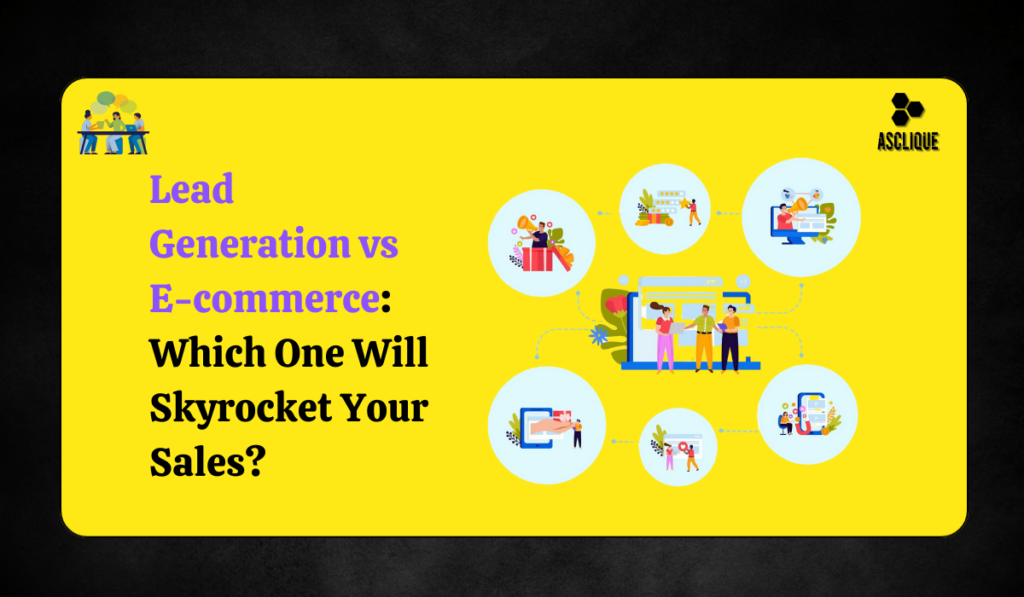In digital marketing, two significant concepts that have been often related but work under two different purposes are lead generation and e-commerce. Even though they are both critical to the expansion of a business, understanding their differences will be able to tell you which best suits your strategy. This article will define lead generation, its difference with e-commerce, and how these two can go together in the development of the business.
What is Lead Generation?
Lead generation is the process of attracting strangers and turning them into potential customers or leads. A lead is usually someone who has shown interest in your product, service, or brand but hasn’t made a purchase yet. The goal of lead generation is to gather information about potential customers—such as their names, email addresses, and phone numbers—so that your business can nurture these leads into paying customers over time.
This usually follows a few general steps:
- The first is Attention Attraction. A company can achieve this through content marketing (writing of blog posts, videos, or social media posts), paid ads, or email marketing.
- Capturing the Lead: This occurs when an interested prospect converts to a potential sale by filling up lead capture forms, downloading some content like an eBook or whitepaper, webinar sign-up forms, and many more.
- Nurturing leads involves businesses engaging with captured leads through follow-up emails, targeted content, phone calls, and more to convert them into customers.
Lead generation focuses on building long-term relationships and creating an efficient list of qualified prospects, eventually turning them into loyal customers.
What is E-commerce?
E-commerce is simply a process through which goods or services are bought or sold using the internet. In this method, the primary activity is generating a sale straight from the consumers to businesses because this kind of approach focuses on immediate selling. While in lead generation, it focuses more on acquiring customers and fostering relationships, in e-commerce, one is ready with what to purchase because he has precisely known his demands.
Key elements of e-commerce
- Product Listings: Electronic catalog of all products or services offered for purchase.
- Shopping Cart: A mechanism in which the clients can pick what they wish to buy and carry it along until check-out.
- Payment Gateway: Technology providing a safe interface for the transfer of money across the Internet.
-
Order fulfillment happens once a business receives an order. The business is responsible for managing inventory, handling shipping, and providing customer service to fulfill the order.
E-commerce enables customers to shop online from the comfort of their homes, placing orders from anywhere in the world, 24/7. In this model, sales generation focuses on immediate transactions rather than lead nurturing.
Key Differences Between Lead Generation and E-commerce
Although both lead generation and e-commerce are the main pillars of digital marketing, they are meant for two different purposes within a business. Here are some key differences between the two:
Objectives
Sales Funnel Stage
- Lead Generation: This is the top of the sales funnel. Here, you attract people who are not yet ready to buy but have shown interest in what you are offering.
- E-commerce: This is the closest to the bottom of the sales funnel. People are already interested in buying and will want to make their purchase there.
Customer Interaction
- Lead Generation: In lead generation, businesses continuously interact with prospects in the form of emails, calls, and more personalized content. The intention is to instill trust and keep the lead interested over time.
- E-commerce: E-commerce is based on one-time interaction whereby customers browse, select, and purchase items online. The interaction is more transactional and outcome-based.
Marketing Strategies
- Lead Generation: Businesses use tactics like content marketing, social media, webinars, free trials, and downloadable resources to capture leads. The emphasis is on educating the prospect and offering value.
- E-commerce: E-commerce strategies focus on product listings, paid advertising (Google Ads, Facebook Ads), email marketing for sales, and retargeting to increase the likelihood of completing a purchase.
Sales Cycle
- Lead generation will have a sales cycle that tends to be longer due to nurturing the leads over a period. In some industries or types of product or service, this may span weeks; sometimes, it even goes on to take months.
- E-commerce: The sales cycle in e-commerce is shorter because the transaction takes place immediately after a decision to buy. The customer knows what he or she wants and makes a fast decision to buy.
Measurement and Metrics
- Lead Generation: The metrics of lead generation are success factors such as lead conversion rate, cost per lead, and email open rates. These metrics are used to analyze the lead capture and nurturing process.
- E-commerce: The conversion rate, average order value, cart abandonment rate, and sales revenue constitute the main KPIs in the case of an e-commerce online store. It measures how an online store operates and if any marketing plan leads to sale results.
How Lead Generation and E-commerce Complement Each Other
Lead generation and e-commerce are different entities that can work alongside each other. Here is the explanation for why this works for business growth.
- Lead generation for sales in e-commerce: If you own an e-commerce store, you can make use of lead generation in building an audience who will eventually buy stuff from you in the future. For instance, if you offer a discount from you in exchange for a customer’s email address, then you will be able to build a list of those people who will definitely make a purchase in the near future. After having captured the leads, you can communicate them targeted promotions and product recommendations for boosting sales.
- E-commerce for Lead Generation: You can use data from an e-commerce website to enhance lead generation. For example, when a customer buys a product, you may send him additional complementary products or services through follow-up emails, thereby pushing him towards making future purchases.
- Lead generation can give you a customer base that, once generated, you can target later on and market for your upselling or cross-selling product through your e-commerce site. Similarly, your e-commerce platform will be able to identify leads and pinpoint the actual potential upsell opportunities that come from these leads’ purchases.
Conclusion
In a nutshell, lead generation and e-commerce are two integral components of modern digital marketing strategies. Lead generation focuses on attracting potential customers who need nurturing to drive future sales, while e-commerce aims at generating actual sales of products. By knowing how to integrate both with each other, you can maximize your reach while optimizing customer engagement and, thus boosting your sales in the end.
Whether you are looking to generate leads for future nurturing or make immediate transactions, combining the best of both approaches can set your business up for long-term success.
FAQs
Lead generation vs. e-commerce: what is the point of distinction?
Lead generation refers to the process of gathering leads’ contact information so that over time, a relationship can be formed. E-commerce involves direct selling of products to the customers via the online medium.
How does lead generation contribute to e-commerce business?
Lead generation contributes to making the e-commerce business bigger through the collection of email addresses that can be utilized sometime later to send promotions and surge future sales.
Which lead generation marketing strategies are effective?
Effective lead generation marketing strategies include helpful content, free eBook offers, hosting webinars, and ads to capture contact information from interested people.
What are the key metrics for measuring lead generation success?
The key metrics are lead conversion rate (how many leads become customers), cost per lead (how much it costs to get each lead), and email open rates (how often your emails are opened).
Can an e-commerce business use lead generation to increase its sales?
Yes, by collecting leads and sending them special offers or product recommendations, e-commerce businesses can turn those leads into paying customers and boost sales.

